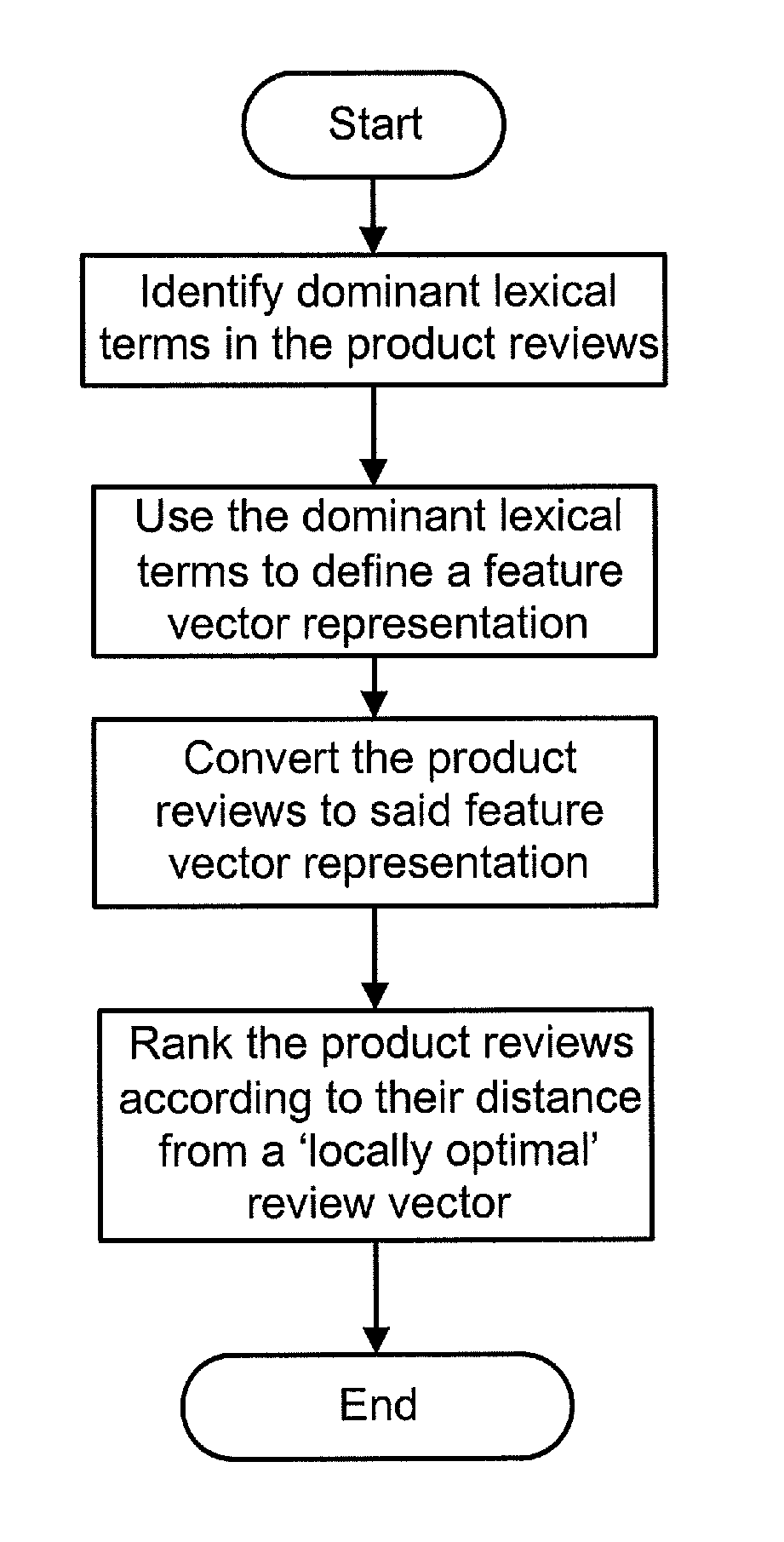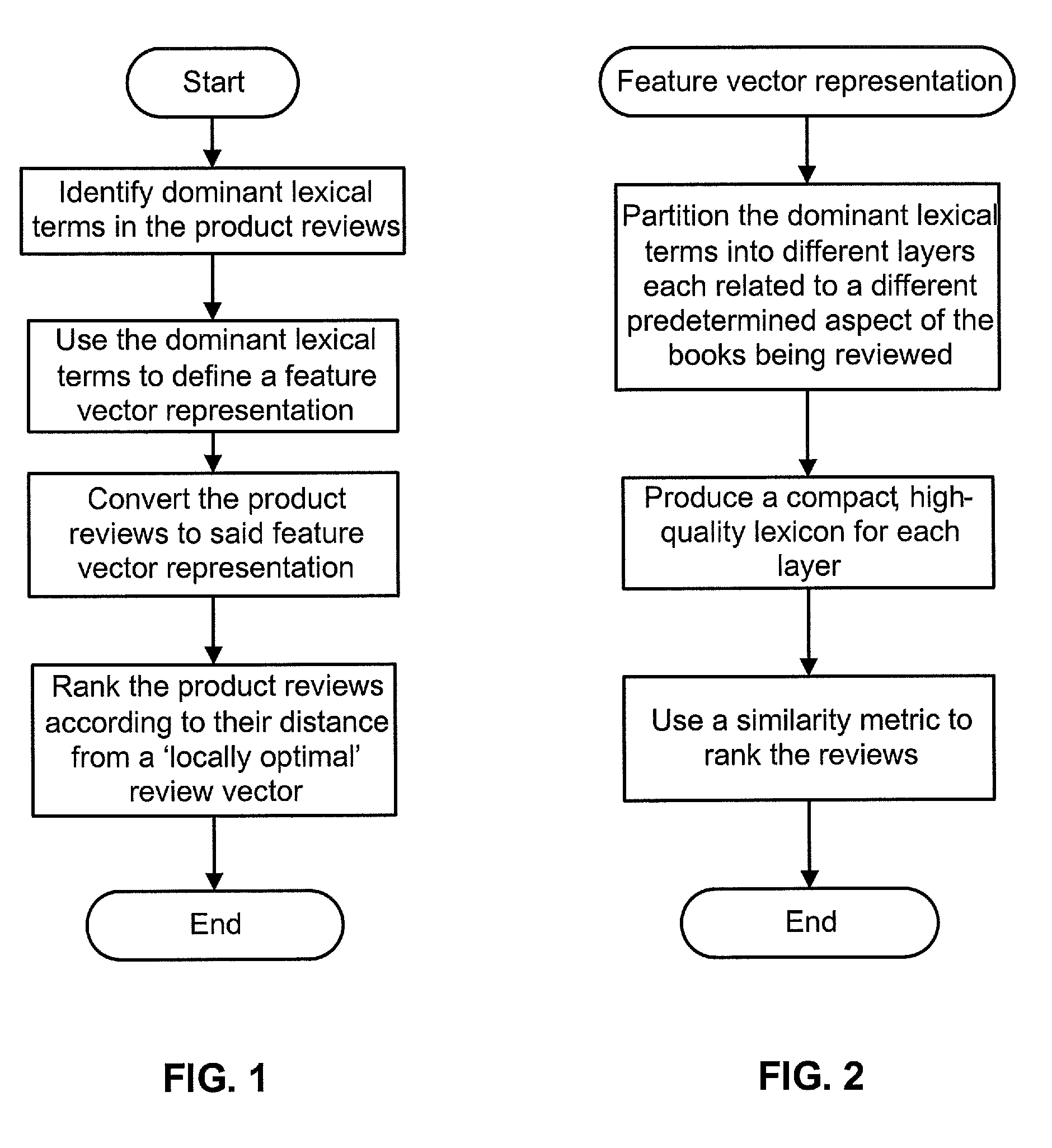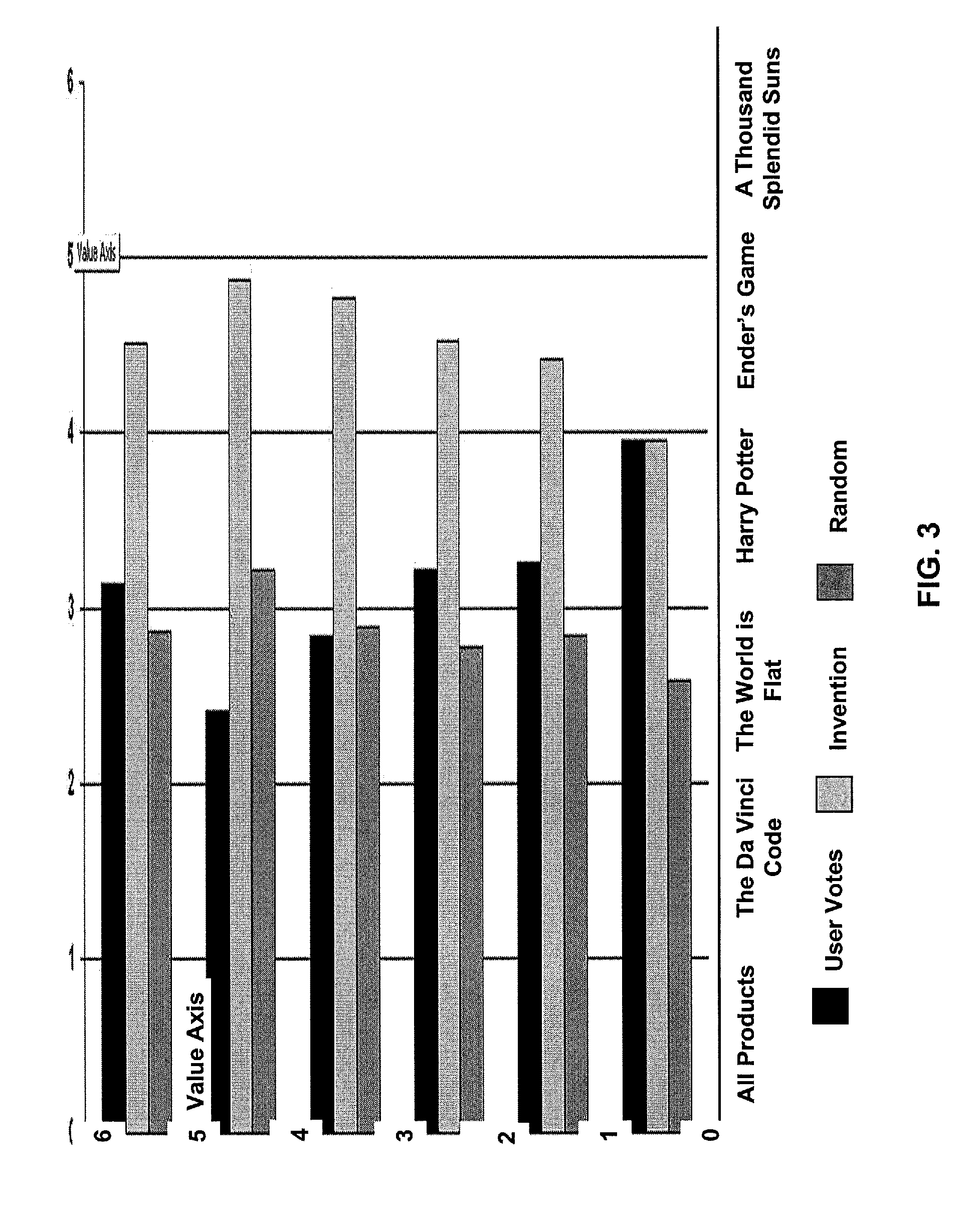Method and system for automatically ranking product reviews according to review helpfulness
a technology of automatic ranking and product reviews, applied in the field of lexical ranking, can solve the problems of many reviews left unnoticed, difficult for the evaluator to assess, and the user voting mechanism suffers from various types of bias
- Summary
- Abstract
- Description
- Claims
- Application Information
AI Technical Summary
Benefits of technology
Problems solved by technology
Method used
Image
Examples
Embodiment Construction
Overview
In classic information retrieval, a document is represented as a bag of words, and each word in each document is assigned a score (typically tf-idf (Salton and McGill [11])) that reflects the word's importance in this document. In one aspect, the invention uses the score to identify dominant terms and uses them to define a feature vector representation. Reviews are then converted to this representation and ranked according to their distance from a ‘locally optimal’ review vector. In another aspect, the invention takes this approach a step further, by building different lexicons for various review layers. These lexicons enable a compact document representation highly suitable for review analysis, demonstrated here with regard to the task of review ranking.
The Locally Optimal Lexicon
Lexical items (one word or more) are associated with the locally optimal lexicon according to their dominance. As with above-mentioned tf-idf, dominant terms are not necessarily the most frequent t...
PUM
 Login to View More
Login to View More Abstract
Description
Claims
Application Information
 Login to View More
Login to View More - R&D
- Intellectual Property
- Life Sciences
- Materials
- Tech Scout
- Unparalleled Data Quality
- Higher Quality Content
- 60% Fewer Hallucinations
Browse by: Latest US Patents, China's latest patents, Technical Efficacy Thesaurus, Application Domain, Technology Topic, Popular Technical Reports.
© 2025 PatSnap. All rights reserved.Legal|Privacy policy|Modern Slavery Act Transparency Statement|Sitemap|About US| Contact US: help@patsnap.com



